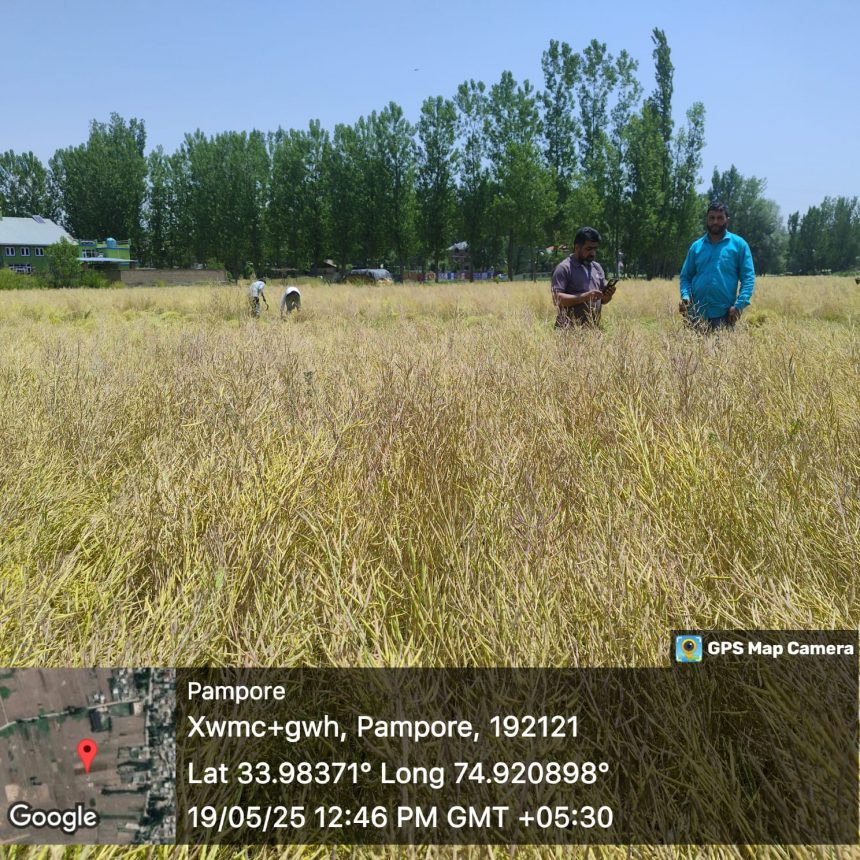Pulwama, May 23: The oilseed model villages (OMVs) in South Kashmir’s Pulwama district have reported a bumper mustard crop this season.
Officials informed Rising Kashmir that around 200 hectares of land were cultivated under the National Food Security Mission (NFSM) on Oilseeds—a programme under the Ministry of Agriculture & Farmers Welfare, Government of India. The initiative is being implemented by Sher-e-Kashmir University of Agricultural Sciences and Technology, Kashmir (SKUAST-K), through its Krishi Vigyan Kendra.
Dr. Javid Ahmad Mughloo, Head and Chief Scientists KVK Malangpora, said five habitations in the district have been adopted as oilseed model villages.
These include Patal Bagh, Lelhara, Wasoora, Wagad, and Syedabad Pastuna.
He added that farmers in these villages were provided high-quality hybrid seeds of the SS-2 (Shalimar Sarson-2) variety, free of cost. Along with seeds, they received comprehensive support packages that included fertilizers, weedicides, and guidance on best agricultural practices.
“This year, these villages have recorded a bumper mustard crop,” Dr. Mughloo said, “We expect a yield of around 3,400 quintals of oilseed, compared to 3,000 quintals last year.”
In addition to the oilseed model villages, approximately 70 hectares were covered under the Cluster Frontline Demonstration (CFLD) programme in the district.
In total, about 270 hectares of land in Pulwama have been cultivated with the SS-2 mustard variety. While the initiative benefits farmers across many areas, the five OMVs remain the focal point.
Shabeer Ahmad Lone, a farmer from Lelhara village in the Kakapora agriculture block, shared his experience. “I sowed SS-2 on three kanals of land, and for the first time, I harvested a bumper mustard crop,” he said, noting the significantly higher yield per kanal.
He expressed gratitude to the Vice Chancellor of SKUAST-K, Dr Nazir Ahmad Gania and the Head of KVK Malangpora, Dr Javid Ahmad Mughloo for adopting Lelhara as a model village and personally overseeing the distribution of free inputs including seeds, fertilizers, nutrients, and weedicides.
Experts highlight that Jammu and Kashmir currently has to import mustard oil worth around ₹2,000.
They believe that expanding mustard cultivation is crucial for reducing this dependency.
The high-yield SS-2 variety, producing approximately 35 kg per quintal and 90 kg per kanal, is expected to greatly enhance local oilseed production.










